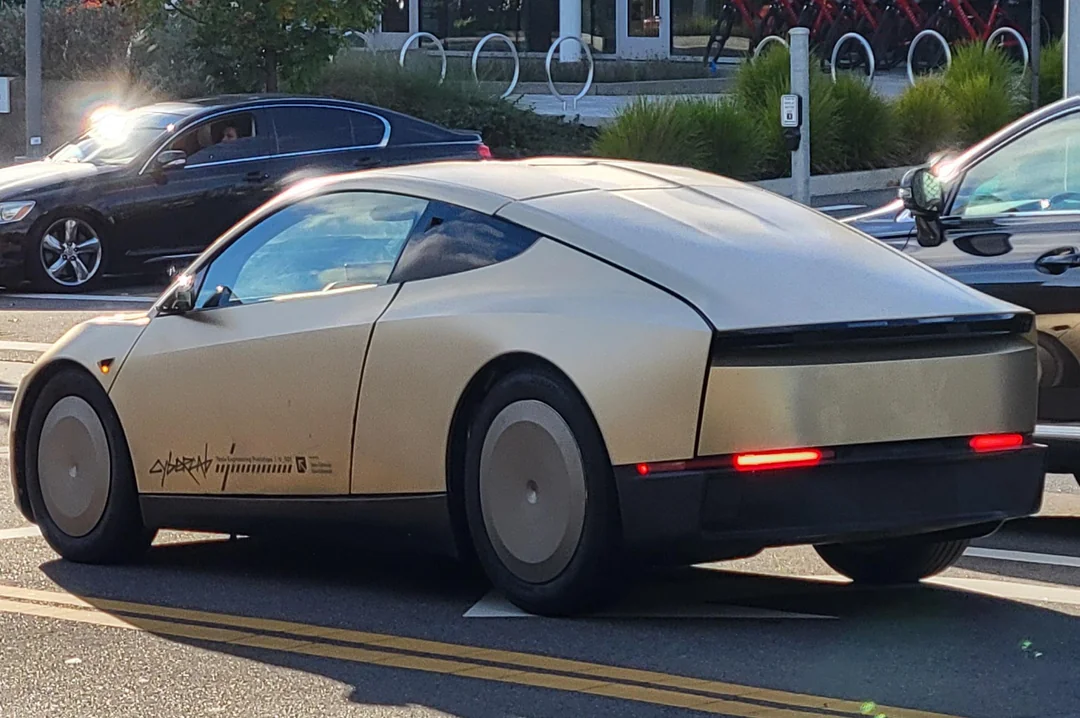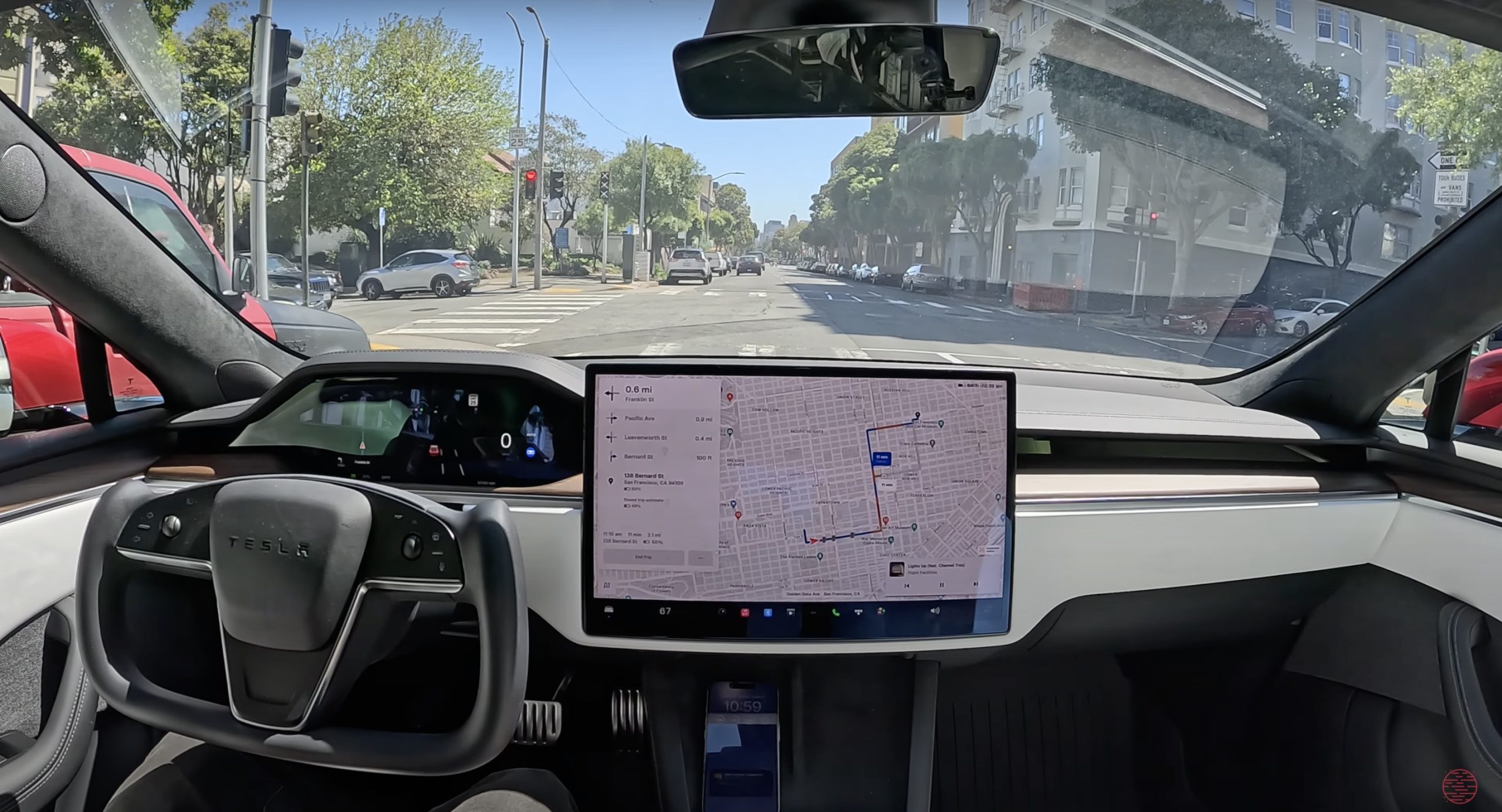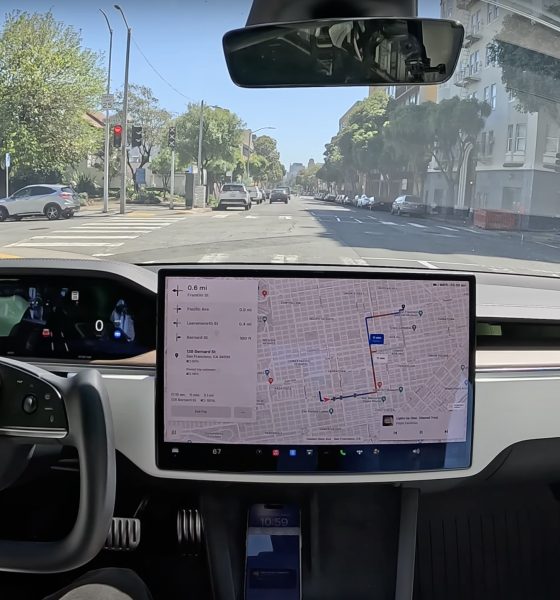A report shared over the weekend claims that the transition team for President-elect Donald Trump is looking to create a federal framework for self-driving vehicles—and to make the sector a top priority in the upcoming term.
Trump’s transition team is looking to create federal rules for the rollout of autonomous vehicles, according to people familiar with the matter in a report from Bloomberg on Sunday. The news comes as Tesla and others are developing and deploying autonomous vehicles, and as Elon Musk has officially been named a co-leader of the Department of Government Efficiency (DOGE) for the Trump administration.
The sources also said that autonomy laws would be a major priority for the U.S. Department of Transportation after past efforts to increase the number of available permits for self-driving vehicles have been thwarted. According to additional people familiar with the matter who spoke under the condition of anonymity, the Trump team is also actively looking to find policy leaders to help develop the guidelines.
Currently, the National Highway Traffic Safety Administration (NHTSA) lets manufacturers deploy as many as 2,500 self-driving vehicles per year under a granted exemption, though attempts to increase allowed units to 100,000 have been unsuccessful. Self-driving vehicles without a steering wheel or accelerator pedals—such as Tesla’s recently unveiled Cybercab—aren’t currently permitted to be deployed en masse, but many think that such a move from Trump could accelerate the deployment of the technology.
Tesla, Waymo, and others developing self-driving vehicles
Currently, Tesla owners can purchase and use the company’s Supervised Full Self-Driving (FSD) to access semi-autonomous driving, though drivers are expected to be attentive and prepared to retake control of the vehicle at any moment. Tesla also unveiled its two-seat Cybercab last month, expected to be based on FSD and to enter production in 2026.
Below you can see our first ride in the Cybercab from the We, Robot unveiling event.
🎥: Our FULL first ride in the @Tesla Cybercab pic.twitter.com/6gR7OgKRCz— TESLARATI (@Teslarati) October 11, 2024
While Tesla doesn’t currently operate a paid ride-hailing service like the Alphabet-owned Waymo, or others working toward this model, the company has teased an app based on an FSD ride-hailing service in the past. Additionally, many within the Tesla community claim that FSD will be more scalable than its competitors, due in part to its training of an AI neural network using millions of clips of real-time driving footage from FSD Supervised users.
Other companies such as Amazon-owned Zoox, General Motors-run (GM-run) Cruise, and still many others have also deployed driverless ride-hailing services to varying degrees of success. While California has been one of a few states where self-driving services have been able to start deployment in limited quantities, autonomous driving has also come under fire from regulators and authorities following a few cases of accidents and traffic violations.
Nonetheless, the development of a federal framework for autonomous vehicles could affect how this happens on a national level—and it will likely come to the benefit of Musk and Tesla, especially given the CEO’s closeness with Trump.
Tesla’s next step of dominance comes from Trump EV tax credit policy: Wedbush
Elon Musk and Trump’s Department of Government Efficiency
Musk will lead Trump’s newly created DOGE division in tandem with Vivek Ramaswamy, with the department aiming to “dismantle government bureaucracy” and cut down on government spending. The Tesla CEO initially endorsed Trump in July during his presidential campaign, later forming the political action committee (PAC) America PAC in support of the now-President-elect.
In addition to the financial support, Musk was a vocal backer of Trump’s campaign at rallies and in online media appearances, saying last month that Trump “must win to preserve the Constitution and democracy.” Many have also debated whether Trump’s removal of the federal $7,500 electric vehicle (EV) tax credit would be bad for Tesla and other EV makers, though Musk has said that it will likely only benefit Tesla.
The recent support for Trump also follows an ongoing set of feuds Musk has had with President Joe Biden during his presidency, as was sparked by Tesla not being invited to the administration’s EV summit, and by Biden claiming that GM had been the leader in EV deployment. Musk said in July that Biden is “utterly controlled” by the United Automotive Workers (UAW), following multiple criticisms of the union in the past.
What are your thoughts? Let me know at zach@teslarati.com, find me on X at @zacharyvisconti, or send us tips at tips@teslarati.com.
Former Tesla executive warns of delays to European ADAS regulations

News
Tesla Model 3 named New Zealand’s best passenger car of 2025
Tesla flipped the switch on Full Self-Driving (Supervised) in September, turning every Model 3 and Model Y into New Zealand’s most advanced production car overnight.

The refreshed Tesla Model 3 has won the DRIVEN Car Guide AA Insurance NZ Car of the Year 2025 award in the Passenger Car category, beating all traditional and electric rivals.
Judges praised the all-electric sedan’s driving dynamics, value-packed EV tech, and the game-changing addition of Full Self-Driving (Supervised) that went live in New Zealand this September.
Why the Model 3 clinched the crown
DRIVEN admitted they were late to the “Highland” party because the updated sedan arrived in New Zealand as a 2024 model, just before the new Model Y stole the headlines. Yet two things forced a re-evaluation this year.
First, experiencing the new Model Y reminded testers how many big upgrades originated in the Model 3, such as the smoother ride, quieter cabin, ventilated seats, rear touchscreen, and stalk-less minimalist interior. Second, and far more importantly, Tesla flipped the switch on Full Self-Driving (Supervised) in September, turning every Model 3 and Model Y into New Zealand’s most advanced production car overnight.
FSD changes everything for Kiwi buyers
The publication called the entry-level rear-wheel-drive version “good to drive and represents a lot of EV technology for the money,” but highlighted that FSD elevates it into another league. “Make no mistake, despite the ‘Supervised’ bit in the name that requires you to remain ready to take control, it’s autonomous and very capable in some surprisingly tricky scenarios,” the review stated.
At NZ$11,400, FSD is far from cheap, but Tesla also offers FSD (Supervised) on a $159 monthly subscription, making the tech accessible without the full upfront investment. That’s a game-changer, as it allows users to access the company’s most advanced system without forking over a huge amount of money.
News
Tesla starts rolling out FSD V14.2.1 to AI4 vehicles including Cybertruck
FSD V14.2.1 was released just about a week after the initial FSD V14.2 update was rolled out.

It appears that the Tesla AI team burned the midnight oil, allowing them to release FSD V14.2.1 on Thanksgiving. The update has been reported by Tesla owners with AI4 vehicles, as well as Cybertruck owners.
For the Tesla AI team, at least, it appears that work really does not stop.
FSD V14.2.1
Initial posts about FSD V14.2.1 were shared by Tesla owners on social media platform X. As per the Tesla owners, V14.2.1 appears to be a point update that’s designed to polish the features and capacities that have been available in FSD V14. A look at the release notes for FSD V14.2.1, however, shows that an extra line has been added.
“Camera visibility can lead to increased attention monitoring sensitivity.”
Whether this could lead to more drivers being alerted to pay attention to the roads more remains to be seen. This would likely become evident as soon as the first batch of videos from Tesla owners who received V14.21 start sharing their first drive impressions of the update. Despite the update being released on Thanksgiving, it would not be surprising if first impressions videos of FSD V14.2.1 are shared today, just the same.
Rapid FSD releases
What is rather interesting and impressive is the fact that FSD V14.2.1 was released just about a week after the initial FSD V14.2 update was rolled out. This bodes well for Tesla’s FSD users, especially since CEO Elon Musk has stated in the past that the V14.2 series will be for “widespread use.”
FSD V14 has so far received numerous positive reviews from Tesla owners, with numerous drivers noting that the system now drives better than most human drivers because it is cautious, confident, and considerate at the same time. The only question now, really, is if the V14.2 series does make it to the company’s wide FSD fleet, which is still populated by numerous HW3 vehicles.
News
Waymo rider data hints that Tesla’s Cybercab strategy might be the smartest, after all
These observations all but validate Tesla’s controversial two-seat Cybercab strategy, which has caught a lot of criticism since it was unveiled last year.

Toyota Connected Europe designer Karim Dia Toubajie has highlighted a particular trend that became evident in Waymo’s Q3 2025 occupancy stats. As it turned out, 90% of the trips taken by the driverless taxis carried two or fewer passengers.
These observations all but validate Tesla’s controversial two-seat Cybercab strategy, which has caught a lot of criticism since it was unveiled last year.
Toyota designer observes a trend
Karim Dia Toubajie, Lead Product Designer (Sustainable Mobility) at Toyota Connected Europe, analyzed Waymo’s latest California Public Utilities Commission filings and posted the results on LinkedIn this week.
“90% of robotaxi trips have 2 or less passengers, so why are we using 5-seater vehicles?” Toubajie asked. He continued: “90% of trips have 2 or less people, 75% of trips have 1 or less people.” He accompanied his comments with a graphic showing Waymo’s occupancy rates, which showed 71% of trips having one passenger, 15% of trips having two passengers, 6% of trips having three passengers, 5% of trips having zero passengers, and only 3% of trips having four passengers.
The data excludes operational trips like depot runs or charging, though Toubajie pointed out that most of the time, Waymo’s massive self-driving taxis are really just transporting 1 or 2 people, at times even no passengers at all. “This means that most of the time, the vehicle being used significantly outweighs the needs of the trip,” the Toyota designer wrote in his post.
Cybercab suddenly looks perfectly sized
Toubajie gave a nod to Tesla’s approach. “The Tesla Cybercab announced in 2024, is a 2-seater robotaxi with a 50kWh battery but I still believe this is on the larger side of what’s required for most trips,” he wrote.
With Waymo’s own numbers now proving 90% of demand fits two seats or fewer, the wheel-less, lidar-free Cybercab now looks like the smartest play in the room. The Cybercab is designed to be easy to produce, with CEO Elon Musk commenting that its product line would resemble a consumer electronics factory more than an automotive plant. This means that the Cybercab could saturate the roads quickly once it is deployed.
While the Cybercab will likely take the lion’s share of Tesla’s ride-hailing passengers, the Model 3 sedan and Model Y crossover would be perfect for the remaining 9% of riders who require larger vehicles. This should be easy to implement for Tesla, as the Model Y and Model 3 are both mass-market vehicles.











